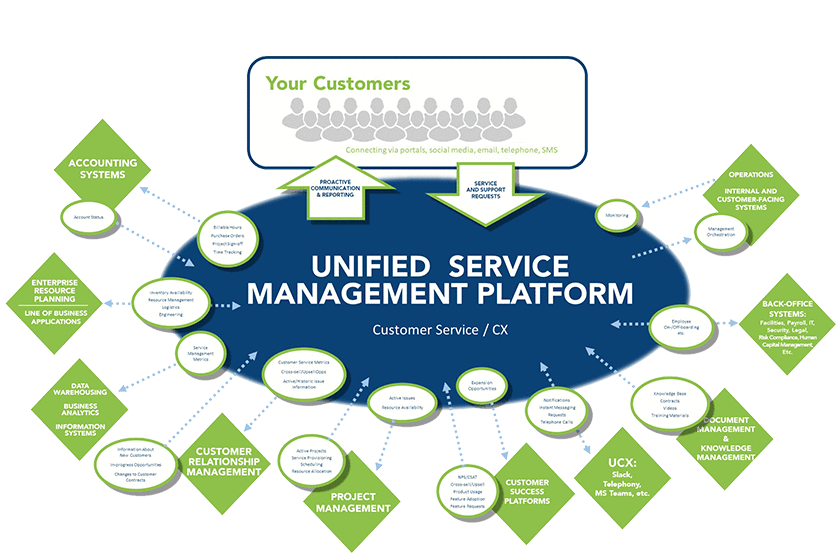If you're using one of the big "standard-issue" service management platforms. You might be forced into some very costly Customer Service practices.
For B2B companies, in particular, it is critical to be able to segment the allocation of your firm’s time and attention to your most valuable customers. The issues might include being able to address each customer with individual rules and to accommodate dynamic re-prioritization.
B2B customer journeys often grow complex because they must accommodate the special needs of small percentages of the client base.
Better connectivity and flexibility to the rescue
From a technology and process perspective, segmenting Customer Journeys into standard and specialty tracks can minimize complexity for a majority of clients,
resulting in easier journeys for clients and significantly lower costs. Additionally, customers can realize economies of scale as multiple large complex relationships are facilitated in similar ways to many smaller relationships. Being able to dynamically shift workloads and route customer service traffic without changing the ”sources of truth” or access rules is another way that a flexible Service Optimization Solution can support the kind of transformative processes required.
From a technological standpoint, a solution that can seamlessly integrate across the whole enterprise is essential. In particular, finding solutions that can accomplish this with a minimum of coding and work-arounds will not only save you money, but will help ensure the timely success of your initiative.
Ask your CS/CX platform vendor these essential questions
-
How much will you be able to accomplish in-house?
Don’t leave yourself at the mercy of consultants. The more capabilities that exist “out of the box” the better. Look for solutions that allow your team to configure processes, rather than solutions that require extensive custom coding. Solutions that empower your administrators to make decisions and changes save costs and delays of third-party reliance.
-
How quickly can you adapt the solution to evolving customer or business needs?
Here too, solutions that require custom coding every time you make a change to your system may be cumbersome. What happens as your customer base evolves...or as systems outside of Customer Service change? Look for solutions that allow for simple interface adjustments vs. prolonged customizations.
-
Does your solution allow you to work independent of other teams’ solutions, supporting the necessary autonomy to evolve?
Look for relevant integration capabilities that are easy to understand and develop so that you’ll have maximum flexibility in creating a more rounded solution. (Be careful! Many current technology solutions fall short here. )
Read to learn more? Why not schedule a free demo and see how Vivantio can elevate your service?


